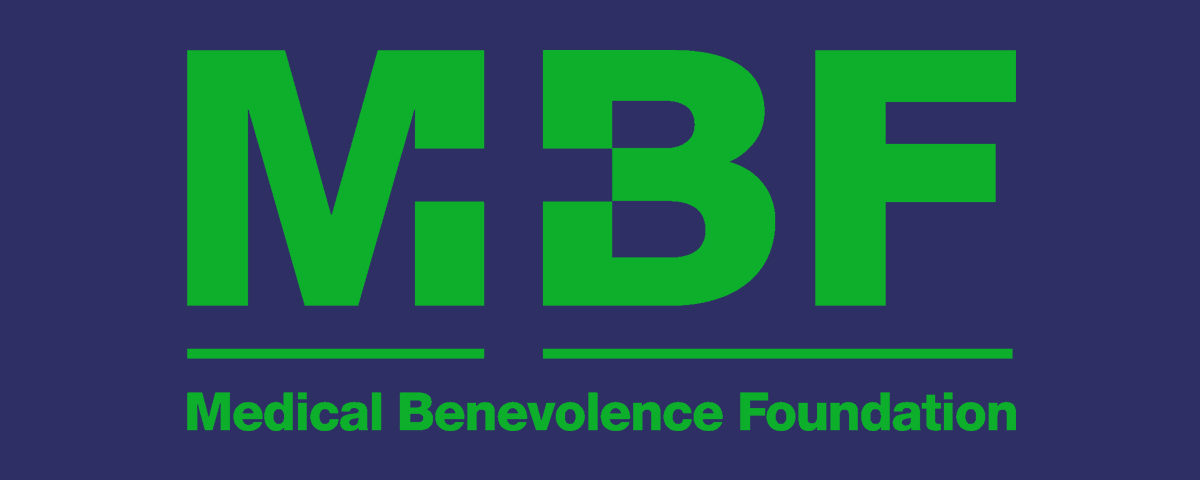Fundraising From Home: A Nonprofit Hub Guide
June 19, 2020
$46,154 Per Employee – PPP Nonprofit Loan Forgiveness
June 24, 2020Medical Benevolence Foundation Supports Pastors During Pandemic

Medical Benevolence Foundation (MBF) Supports Pastors During Pandemic is Tracy Ebarb’s take on how to increase church giving during COVID-19. Here’s what Tracy has to share.
“For the first 8 months of our fiscal year we were running at 100% of projected giving. Once the virus hit we dropped down to 80% right away. To finish our fiscal year in June anywhere near our budget, we’re having to make some very painful cuts, including paid positions.”
VISIT HERE TO DOWNLOAD MBF CONGREGATIONAL OFFERING KIT.
The process was, indeed, painful and the crisis continues, yet Jim’s church has suffered less than most. While churches report an average decrease of 29% according to most surveys, the impact varies by size. Churches like Jim’s, with regular attendance in the 2,000–10,000 range, report losses of 31%. Churches with regular attendance between 500 and 2,000 fared best with a 19% loss, while churches in the 200–499 range struggled most with a 39% drop in giving. You undoubtedly see your own church represented somewhere in these statistics.
Like most crises, including the Great Depression of the 1930s and the Great Recession of 2008, this too shall pass. The common grace of medical science will eventually lessen the impact of the invisible enemy now afflicting humanity. Meanwhile, we cannot afford to simply hunker down and wait for normalcy and congregations to return. We must act now to mobilize our congregations and prepare our churches for a long recovery and, quite likely, a new normal.
The current situation requires a much more proactive approach to stewardship development than a routine annual fall budget appeal. Consider the last time your church had to cancel services due to a serious weather event. Offerings the following week didn’t double to recover the loss, did it? The reality is, we will never recoup the income lost to the shutdown, ever.
Medical Benevolence Foundation Supports Pastors During Pandemic
Fortunately, this is hardly the first “new normal” encountered by the church. After the resurrection of Christ and the outpouring of the Holy Spirit, the first congregation in Jerusalem grew to include many thousands of believers. Soon, however, persecution forced many to seek refuge outside of Jerusalem, in neighboring towns throughout Judea, Samaria, Syria, and beyond. As Christians scattered and carried the gospel with them, their leaders saw powerful forces at work. Not the persecution crisis, as some might have supposed, but the hand of God fulfilling the proclamation of His Son: “You will be my witnesses in Jerusalem and in all Judea and Samaria, and to the end of the earth” (Acts 1:8).
This first-century hardship created the blueprint for how the church would always respond to crises. With each challenge, she has adapted to thrive—not merely survive—and to emerge fundamentally different, ready to engage a fundamentally different world. Today, as in centuries past, the church will again emerge transformed and better prepared to carry the gospel to the lost according to their new normal. The question is, will your particular church become part of this transformation or fall victim to the economic crisis?
This resource builds upon three critical assumptions. First, we face a challenge (and opportunity) far greater than merely surviving the financial crisis created by COVID-19. Second, congregations crave leadership and will respond when engaged forthrightly and proactively. Third, the Lord wants your church to emerge stronger and better-prepared to reach your community.
It is in this spirit and according to these principles that we offer “Top Ten Ways to Re-Ignite Congregational Giving during a Pandemic.”
CONGREGATIONAL OFFERING KIT:
VISIT HERE TO DOWNLOAD MBF CONGREGATIONAL OFFERING KIT.
The guidance offered here represents the collective experience of church leaders, experts in stewardship, researchers, and Christian ministry leaders. This is no small crisis, so we offer no simple answers, no platitudes, no gimmicks, no one-size-fits-all plan for success. Your church is as unique as any church member. Instead, in a series of ten (planned) installments, we will outline a process by which you can determine the best path forward for the church you have been tasked to lead. While we may adjust our course along the way based on feedback and interaction with churches, this guide will address these topics.
1. The State of Our Church
A recovery and growth campaign must begin with a baseline of metrics. This will be an uncomfortable exercise, especially when you compare the current state of giving to the generosity you experienced just a few weeks ago. This installment will help you examine the strength of grace-giving among the congregation and the quality of leadership among your church’s staff.
2. Over-Communication
Fundraising is a lot like sausage-making; the results are pleasing but no one likes to see the process. Fortunately, church attendees get past their squeamishness quickly with forthright and transparent communication that invites accountability. We’ll outline the principles behind effective communication so you can create a strategy that builds confidence and a sense of ownership among your congregation.
3. Tough Calls
No one will be surprised that your church must cut expenses during a crisis, but these decisions must be handled well in order to maintain unity moving forward. We will discuss how to strike the right balance between transparency and details, how to set and communicate priorities, how to gauge the impact on lives, and how to announce the difficult decisions.
4. Making Giving Easy
When a member of the congregation wants to give, we need to make the process simple, easy, and gratifying. Three principles will help you evaluate your giving processes to make sure nothing stands between their desire to give and the church receiving their gift.
5. Identifying and Inspiring Invested Givers
Every church has a mixture of givers, including “impact givers” and “impulse givers.” Understanding the motivations of each will help strengthen the sense of investment your congregation feels, which translates to greater giving and deeper personal involvement in the work of your church.
6. Building Your Church’s Depth Chart
While it’s important to motivate a congregation to support their church, it’s equally important to know their capacity to give and their preferred method of giving. Building a matrix will help you communicate effectively to the various segments of the body.
7. Establishing Your Engagement Strategy
An effective Stewardship Growth Plan will use the information you have gathered to guide your engagement with individuals and specific groups within the congregation.
8. Recruiting and Equipping Your Support Team
While we must apply sound principles from the business world, a church is a spiritual body whose head is Jesus Christ. Prayer remains an essential part of the recovery and transformation process. We will outline how to recruit and equip a team of trusted men and women to pray for the church, its challenges, your plans, and the future of ministry among your congregation. You will also need others to help implement your strategy, gauge the results, and suggest adjustments.
9. Framing a Compelling Opportunity to Give
You can communicate the need, you can stir emotions and appeal to logic, you can make the process simple, but at the end of the day, you must ask for gifts. We will describe how to craft an appeal based on the relationship you have cultivated with an individual or group.
10. Celebrating What God has Done
Building strong congregational support for the church continues after the appeal for help and receipt of gifts. Soon after gifts arrive, it’s time to celebrate the partnership between God and His people. Communicating results will strengthen the community and build momentum toward greater shared financial responsibility.
As we set out on this journey together, let’s begin with an honest, unflinching assessment of where your church stands, the challenges you face, and what opportunities await your leadership.
“Now may the God of peace who brought again from the dead our Lord Jesus, the great shepherd of the sheep, by the blood of the eternal covenant, equip you with everything good that you may do his will, working in us that which is pleasing in his sight, through Jesus Christ, to whom be glory forever and ever. Amen.” (Heb. 13:20–21).
Medical Benevolence Foundation
Tracy Ebarb
281.201.2043 ext. 104
[email protected]
Medical Benevolence Foundation Supports Pastors During Pandemic was first posted at INSIDE CHARITY
For more articles like Medical Benevolence Foundation Supports Pastors During Pandemic VISIT HERE
